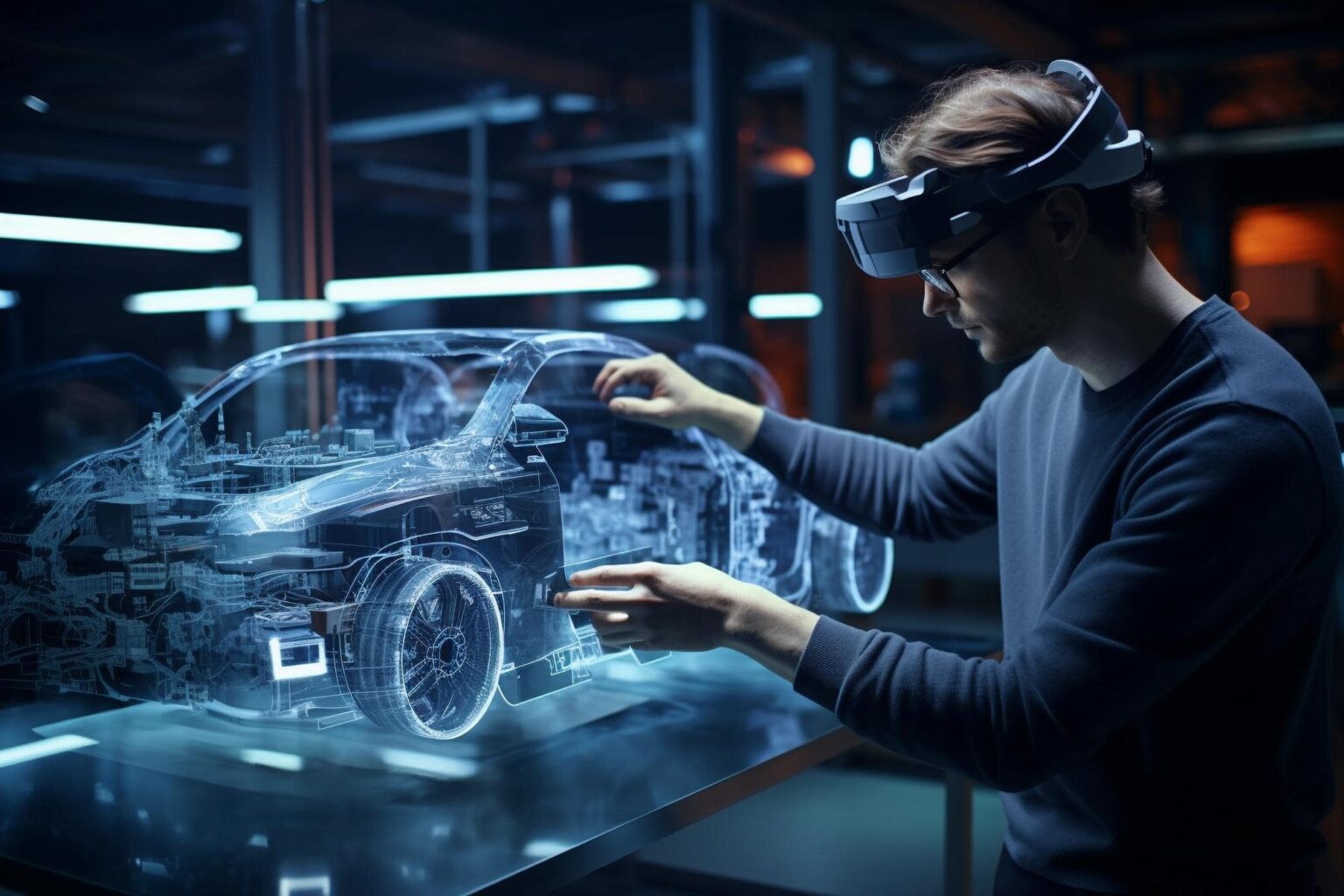Augmented Reality (AR) is poised to revolutionize the automotive industry by offering immersive technologies for enhanced navigation and driving assistance. Here’s how AR is transforming the automotive experience:
- Augmented Navigation Systems: AR-enabled navigation systems overlay digital information onto the driver’s view of the real world, enhancing traditional GPS navigation with contextual information such as turn-by-turn directions, points of interest, and real-time traffic updates. Instead of looking away at a separate screen, drivers can view navigation instructions directly in their line of sight, reducing distractions and improving situational awareness.
- Head-Up Displays (HUDs): AR-powered HUDs project relevant information onto the windshield or a transparent display within the driver’s field of view. These HUDs can display critical data such as vehicle speed, navigation instructions, lane guidance, and safety warnings, allowing drivers to access essential information without taking their eyes off the road. By integrating AR technology into HUDs, automotive manufacturers are enhancing driver safety and convenience.
- Virtual Mirrors and Surround-View Systems: AR-based virtual mirrors and surround-view systems use cameras and sensors to capture real-time images of the vehicle’s surroundings, which are then processed and displayed on screens inside the car. AR overlays can highlight potential hazards, provide parking assistance, and offer a 360-degree view of the vehicle’s exterior, helping drivers navigate tight spaces and avoid collisions more effectively.
- Driver Assistance and Augmented Reality Guidance: AR technology can enhance driver assistance systems by providing visual cues and guidance directly within the driver’s field of view. For example, AR overlays can highlight lane markings, upcoming road signs, and potential obstacles, helping drivers stay centered in their lane and maintain safe distances from other vehicles. These augmented reality features supplement traditional driver assistance technologies such as adaptive cruise control and lane-keeping assistance, improving overall safety and comfort.
- Remote Assistance and Maintenance: AR-enabled applications can facilitate remote assistance and maintenance tasks by providing technicians with visual guidance and step-by-step instructions overlaid onto the physical components of the vehicle. Mechanics can use AR glasses or handheld devices to access repair manuals, diagnostic information, and instructional videos, streamlining the repair process and reducing downtime for vehicle maintenance.
- Enhanced Infotainment and In-Car Entertainment: AR technology enhances the in-car entertainment experience by overlaying digital content onto the physical environment. Passengers can enjoy immersive entertainment options such as augmented reality games, interactive tours, and virtual reality experiences, turning mundane commutes into engaging journeys. AR-infused infotainment systems also offer personalized content recommendations, voice-controlled navigation, and social media integration, catering to the diverse preferences of passengers.
- Customization and Personalization: AR technology enables customization and personalization features that allow drivers to tailor their driving experience to their preferences. AR interfaces can adapt to individual user profiles, displaying relevant information, settings, and shortcuts based on the driver’s preferences and driving habits. From adjusting seat positions and climate controls to selecting preferred navigation routes and entertainment options, AR-powered interfaces enhance the user experience by putting control at the driver’s fingertips.
Overall, augmented reality is transforming the automotive industry by offering immersive technologies for enhanced navigation, driving assistance, entertainment, and customization. As AR technology continues to evolve, automotive manufacturers are leveraging its potential to create safer, more convenient, and more enjoyable driving experiences for drivers and passengers alike.



